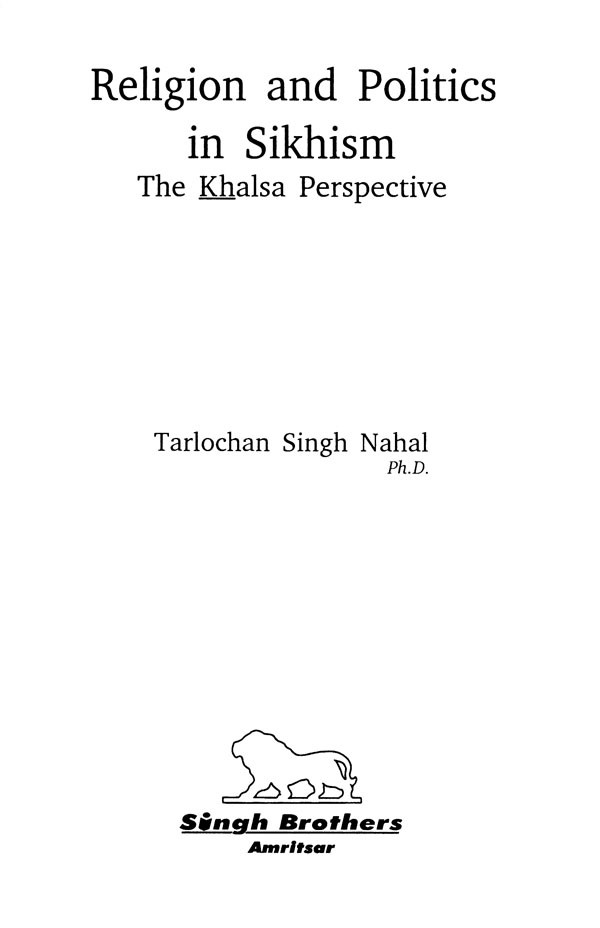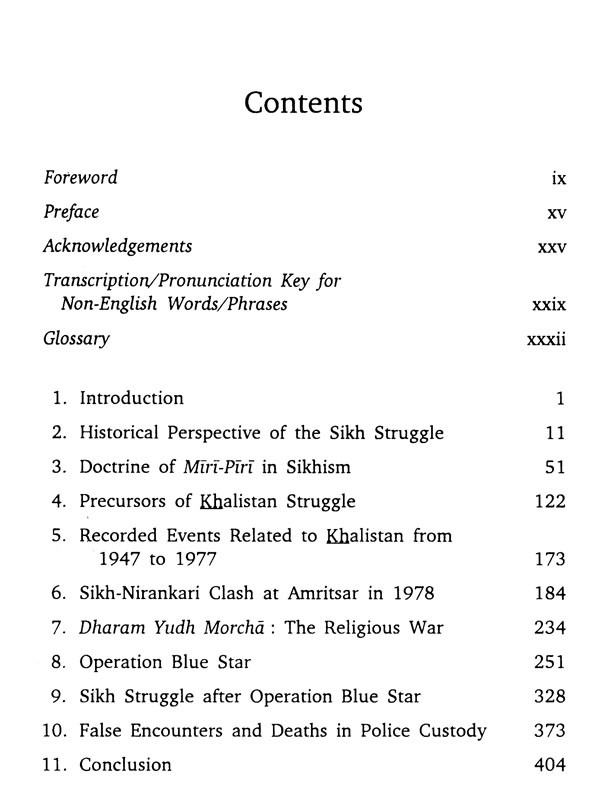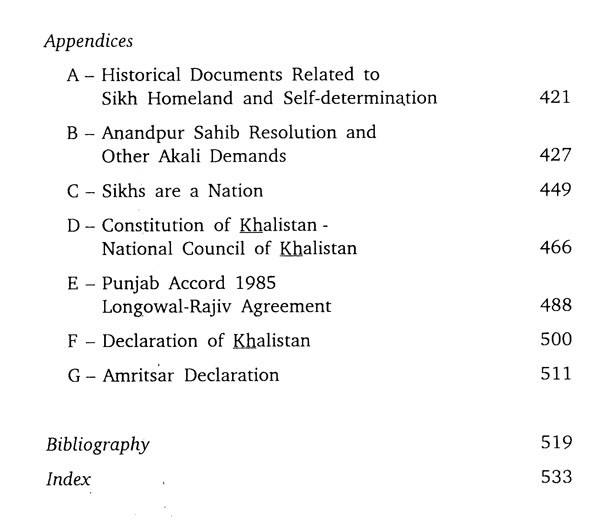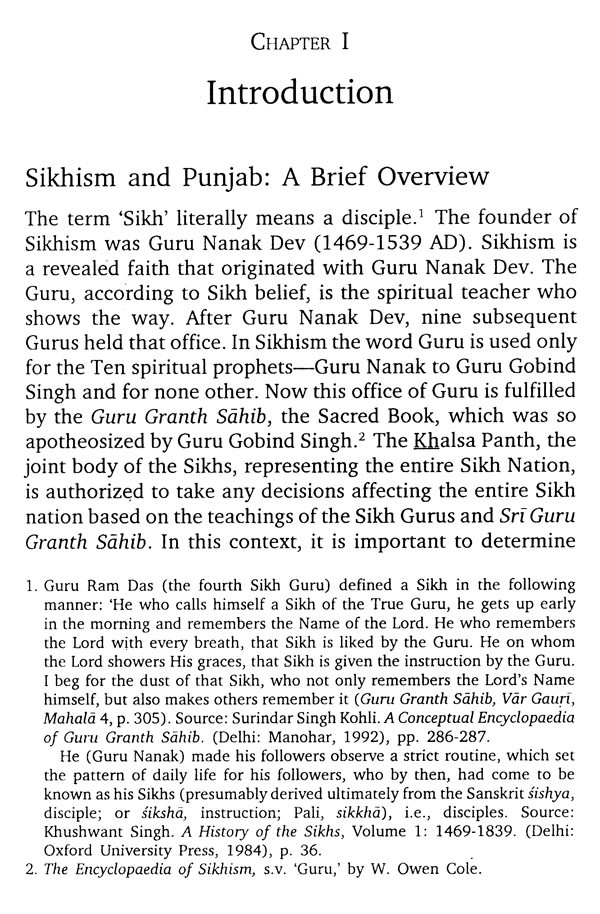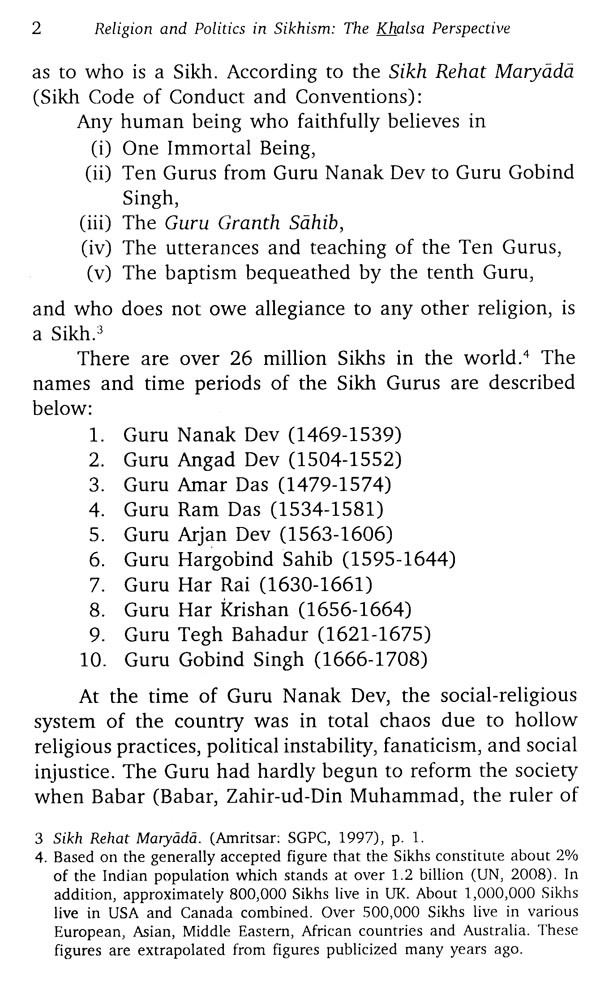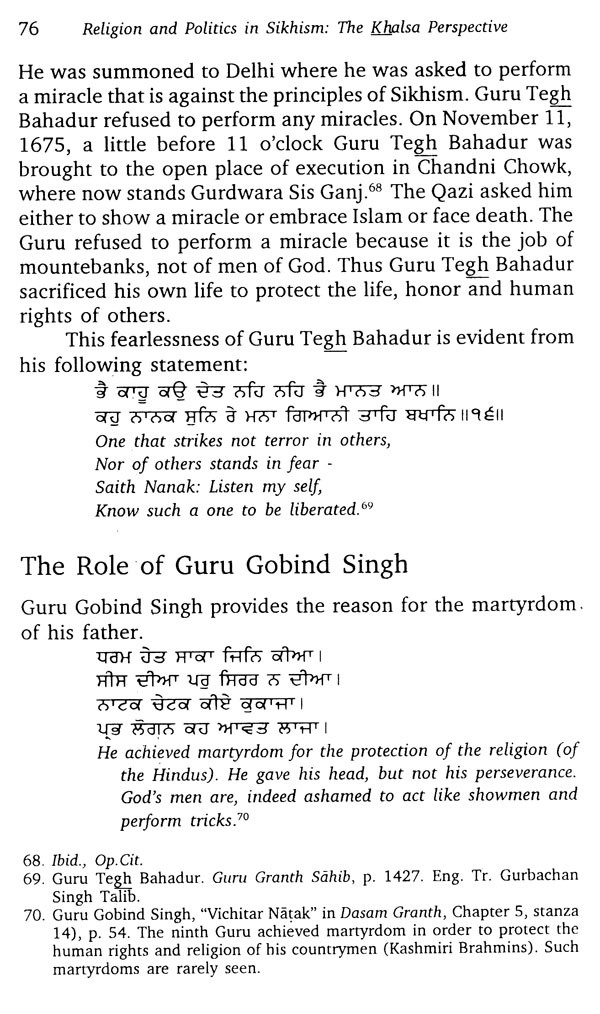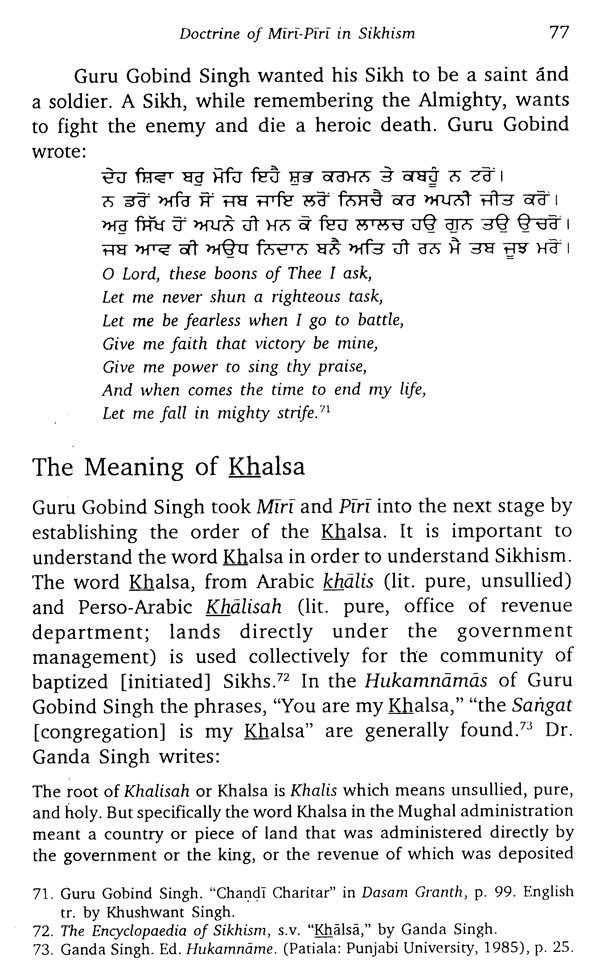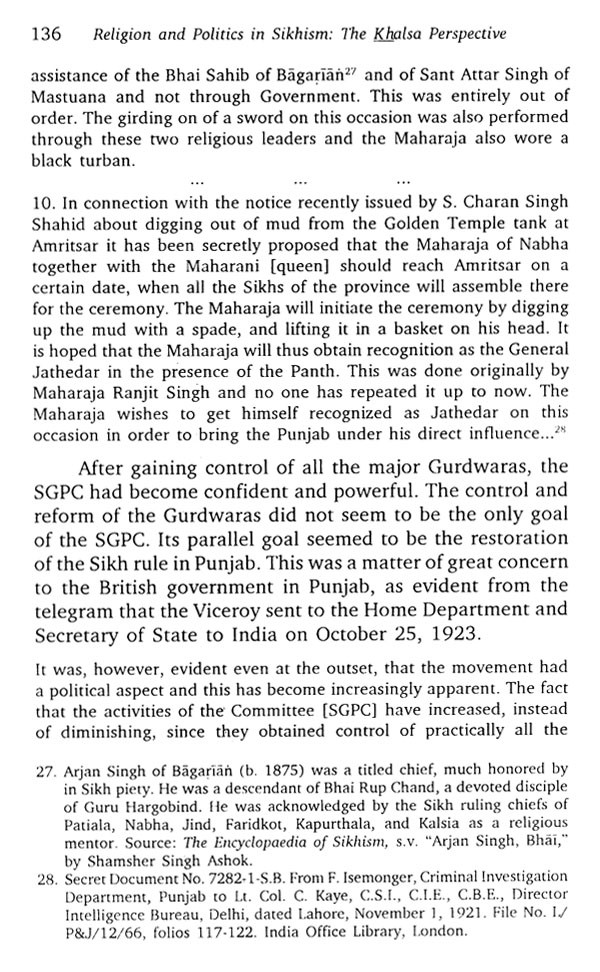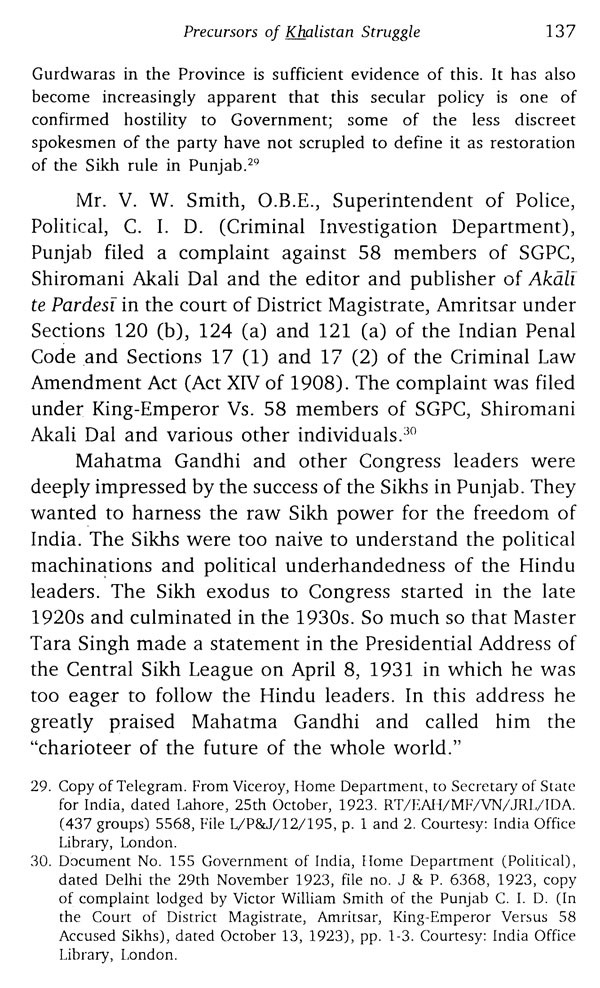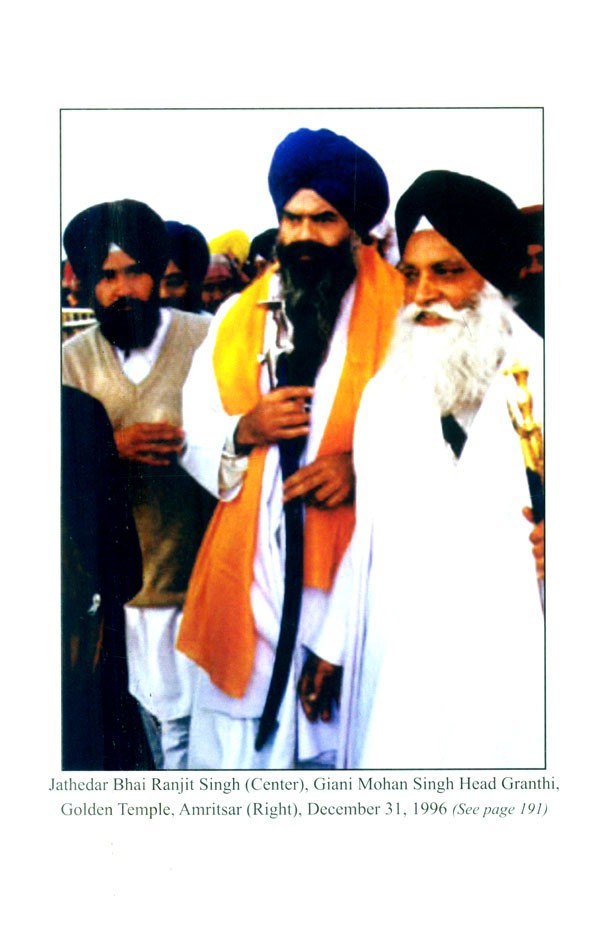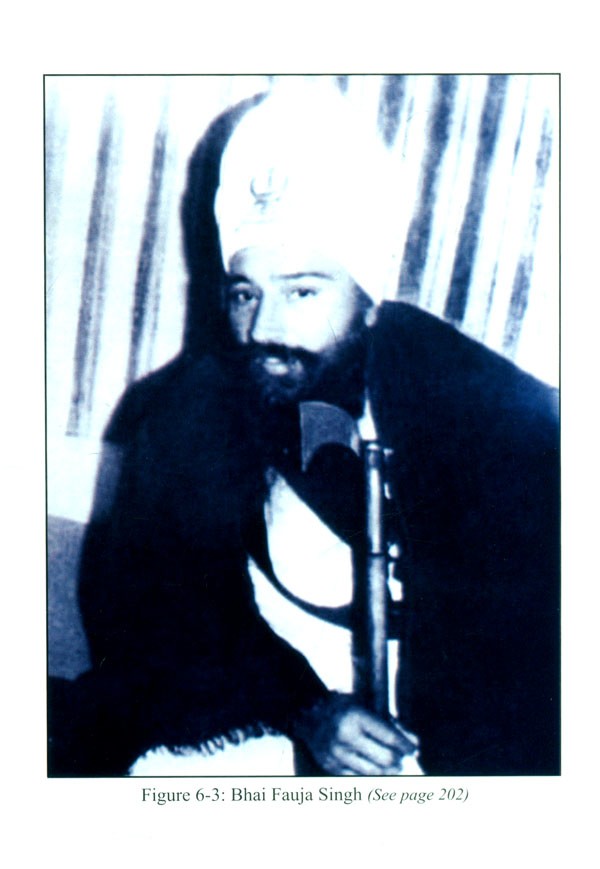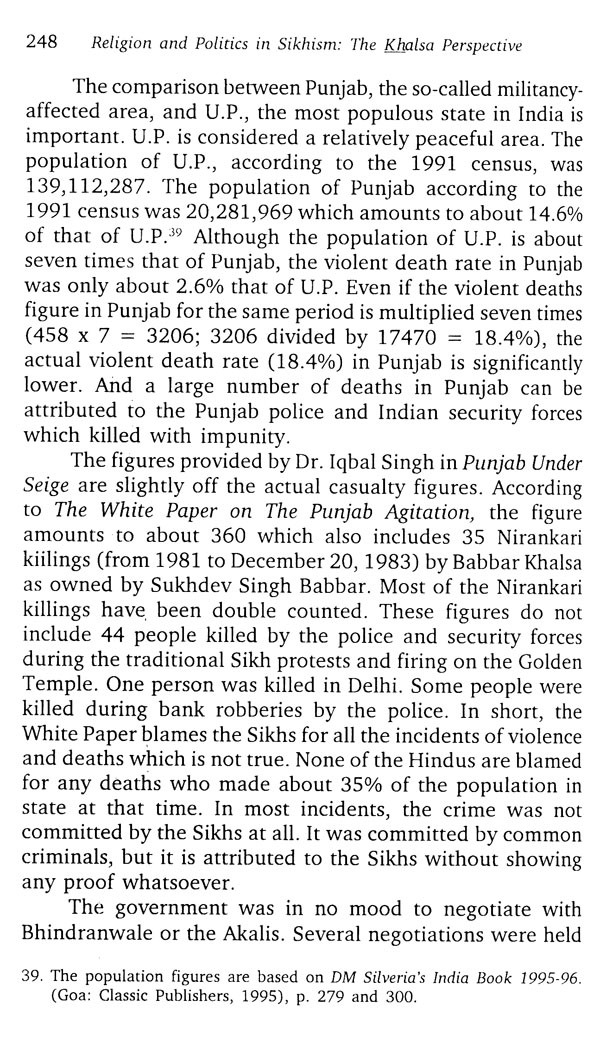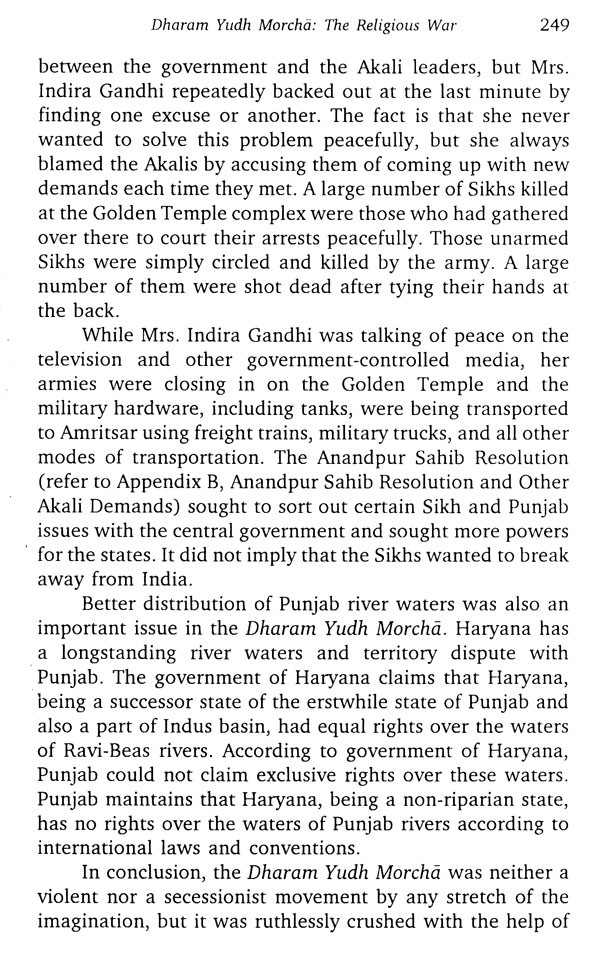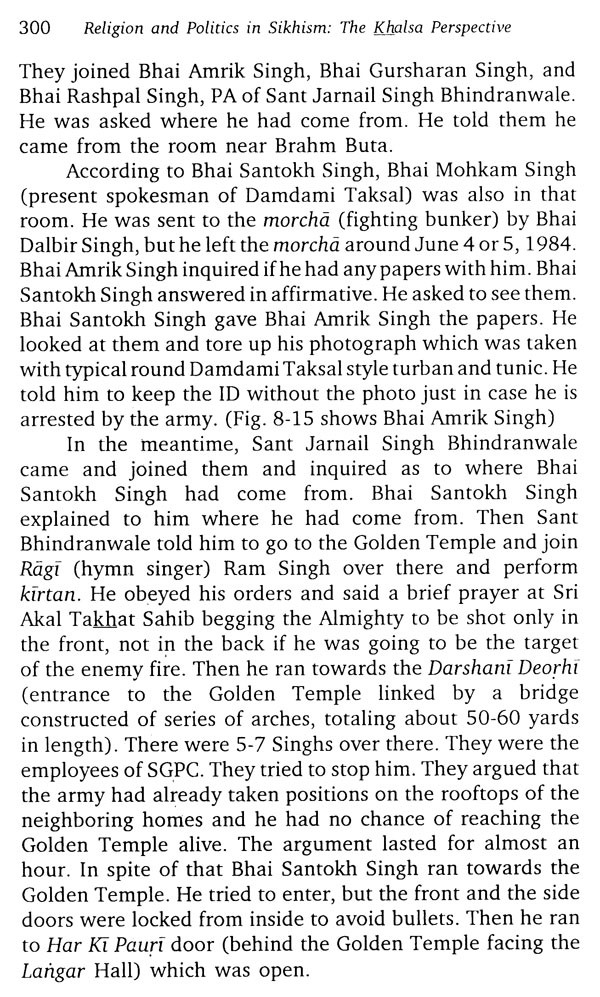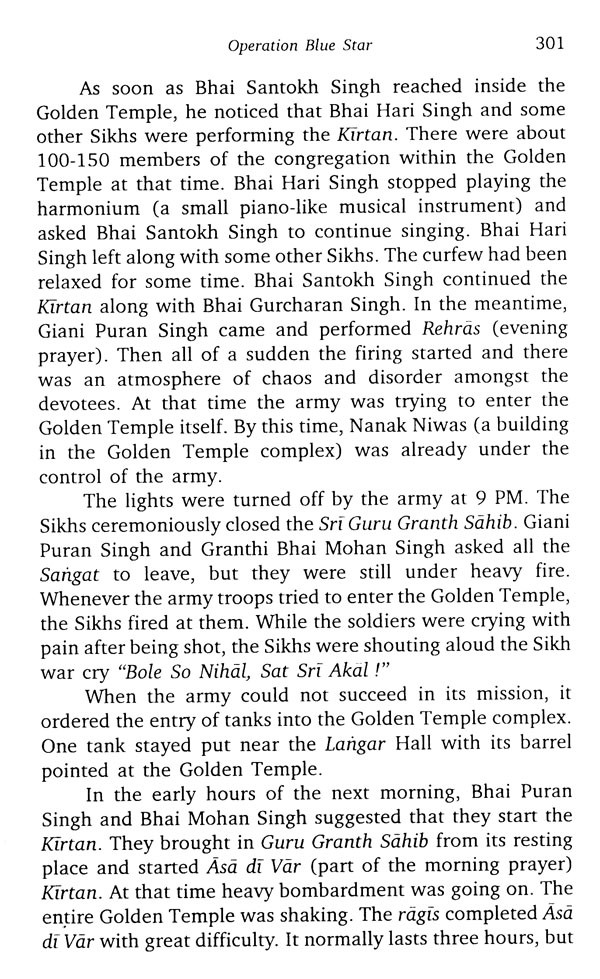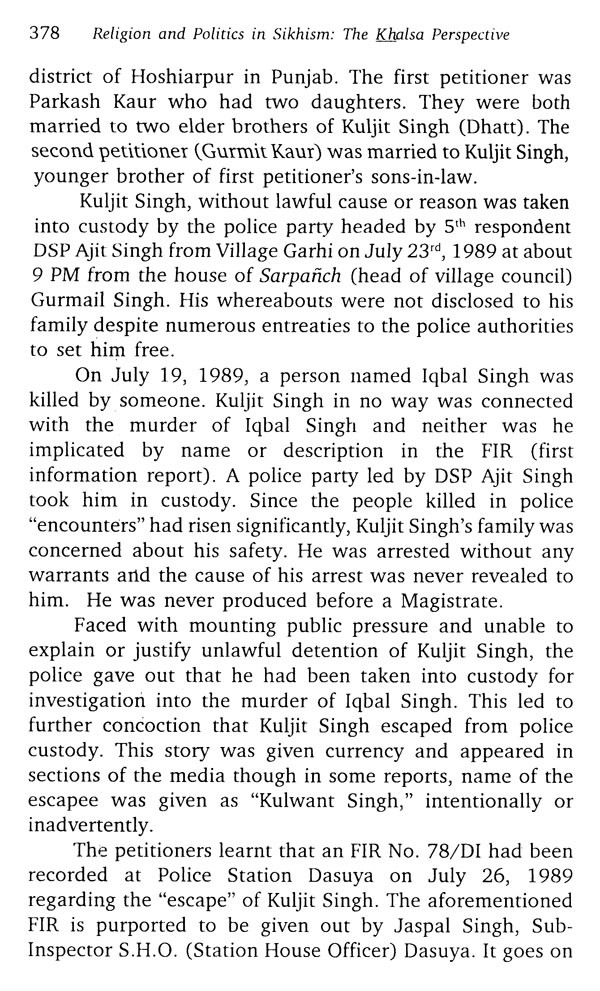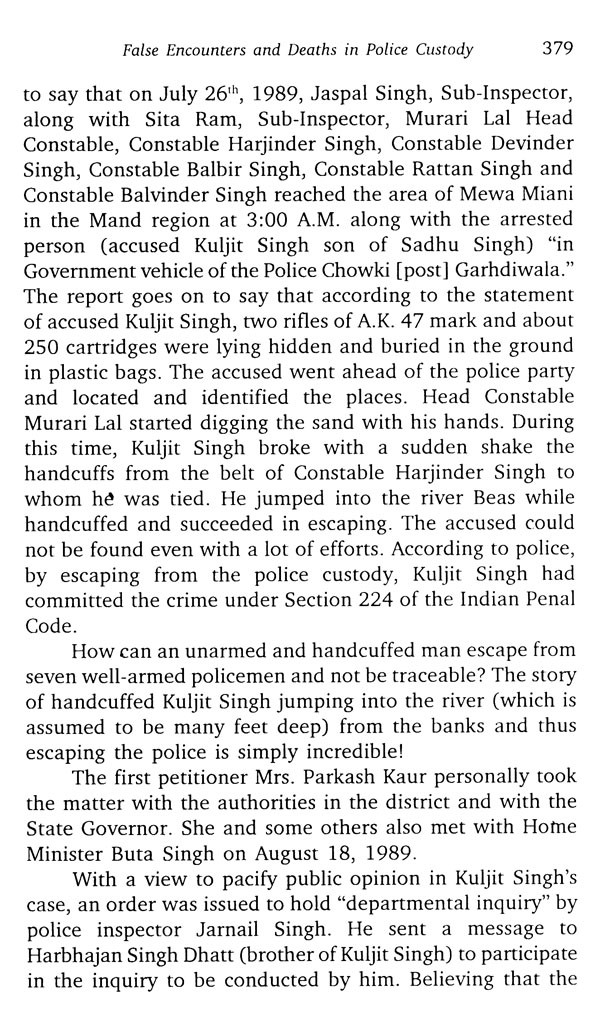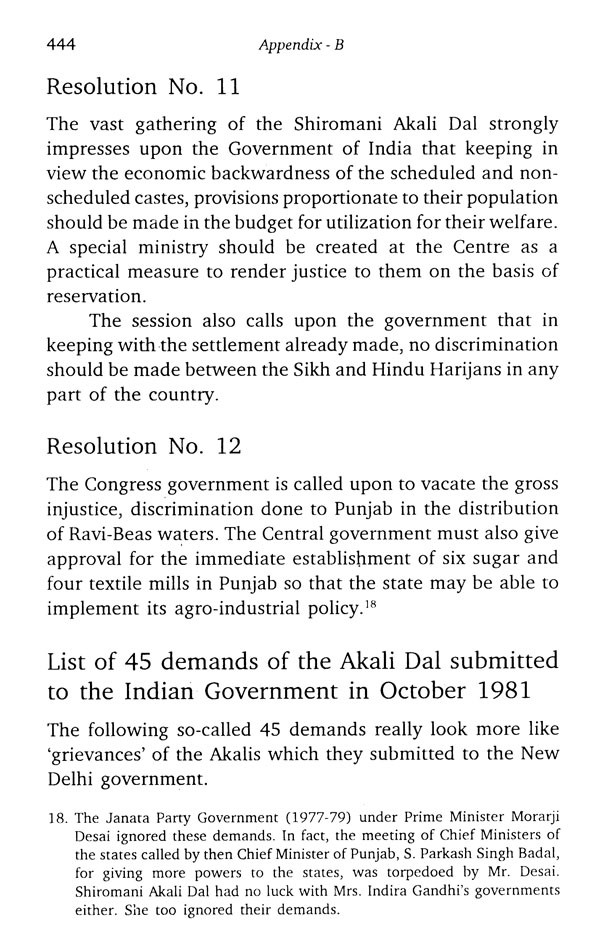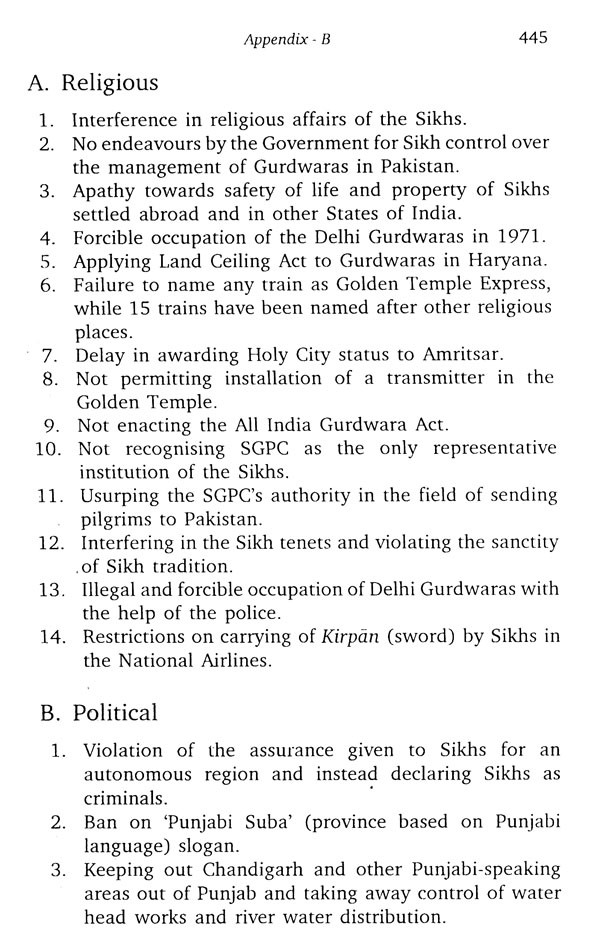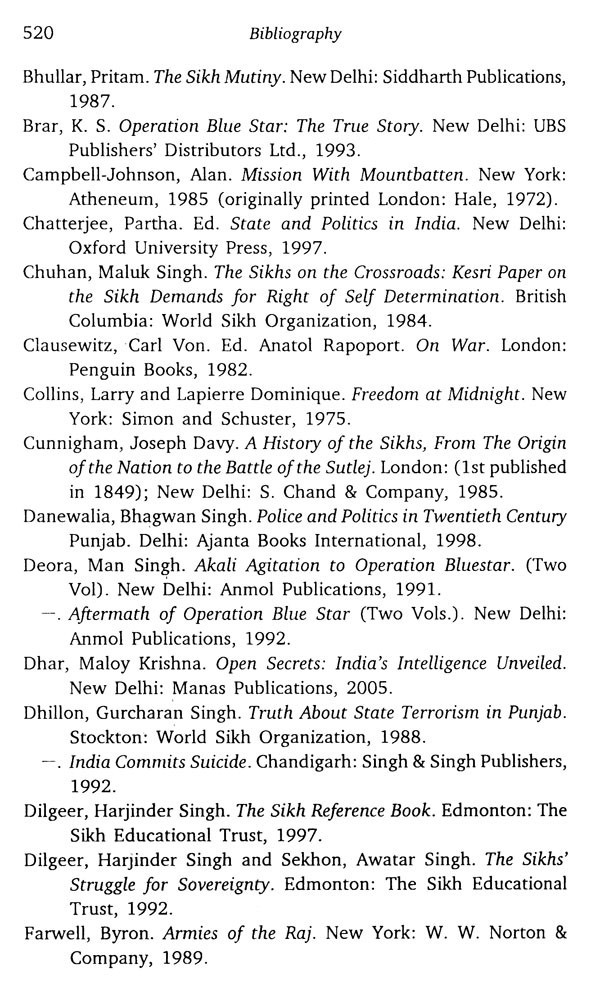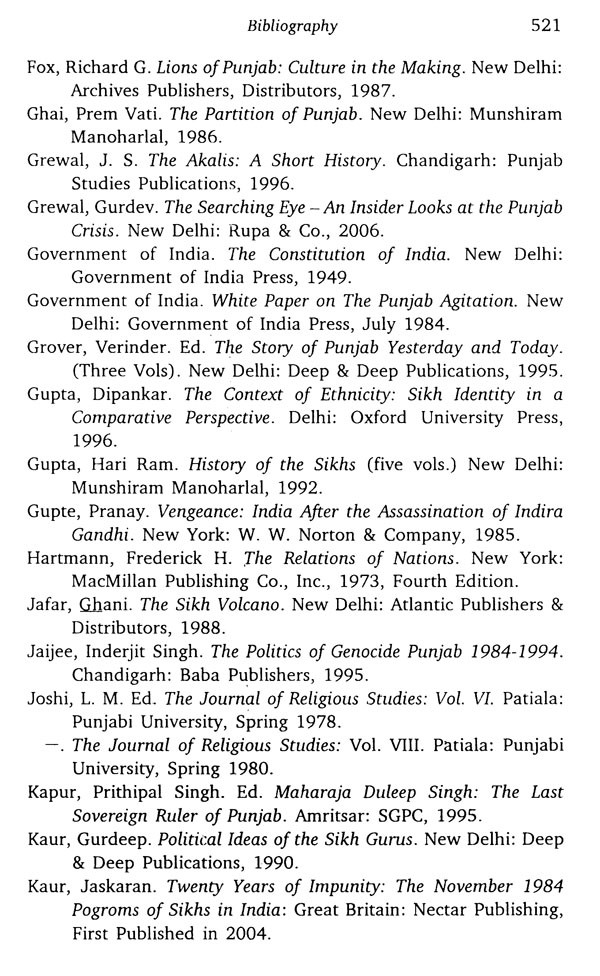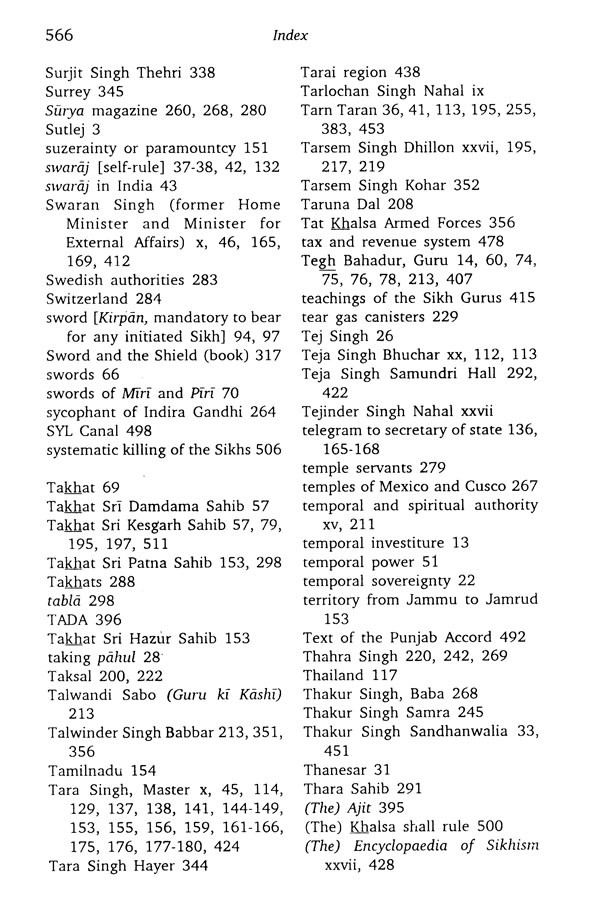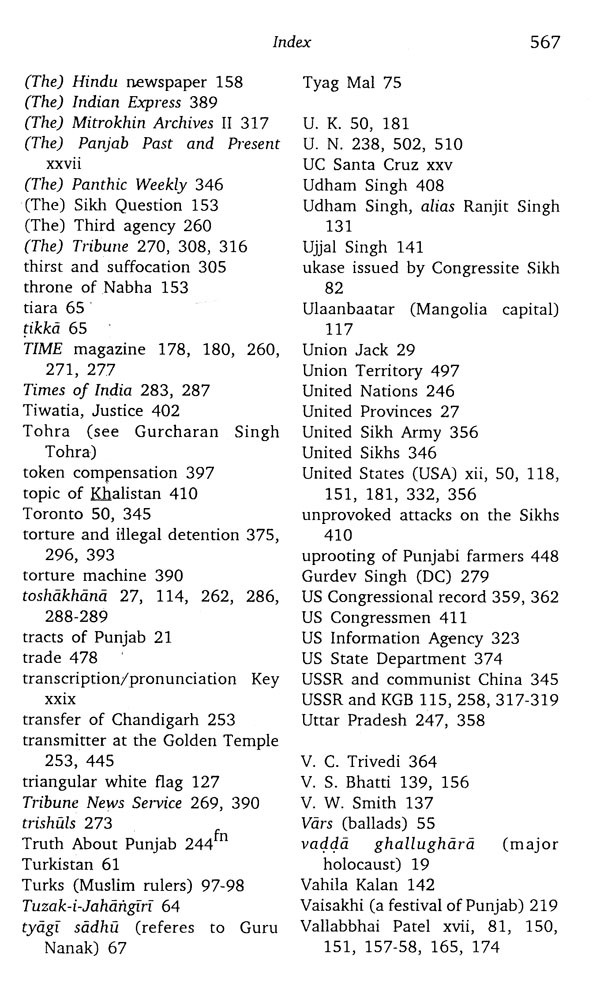
Religion and Politics in Sikhism- The Khalsa Perspective
Book Specification
| Item Code: | UAZ962 |
| Author: | Tarlochan Singh Nahal |
| Publisher: | Singh Brothers, Amritsar |
| Language: | English |
| Edition: | 2011 |
| ISBN: | 9788172054618 |
| Pages: | 600 (Throughout Color Illustrations) |
| Cover: | HARDCOVER |
| Other Details | 9.50 X 6.50 inch |
| Weight | 1.07 kg |
Book Description
The scope of this book is far deeper and goes far beyond. In this monu- mental work, the author explains how religion and politics are intertwined in Sikhism and how the doctrine of Miri-Piri (spiritual and temporal authority) in Sikhism has shaped the Sikh struggle and political thought for centuries.
This book is intended for any student of Sikh history who wants to know about the genuine history of the Sikh struggle which is neither tainted nor sanitized by an 'official version'. This book starts with a brief introduction to Sikhism and then provides a historical perspective of the Sikh struggle and explains the doctrine of Miri-Piri. Then it provides detailed information on the precursors of Khalistan struggle, recorded events related to that struggle, Sikh- Nirankari clash, Dharm Yudh Morcha, Operation Blue Star and its aftermath.
It provides great details of the Sikh armed struggle and gross human rights violations by the Punjab police and Indian security forces. It also provides several important historical documents related to the Sikh struggle in the form of Appendices. This is the most comprehensive research work dealing with these topics.
Dr. Nahal is a keen student of Sikh history and observer of political developments. He has been working as a Sr. Technical Writer in the computer industry for the last 27 years. He has organized several international Sikh academic con- ferences in the USA in the last 15 years. He has also been actively working with the local Sikh youth in promoting sports and healthy living.
Dr. Nahal received a siropā (Robe of Honor) at Sri Akal Takhat Sahib, the seat of Sikh spiritual and temporal authority at Amritsar, in January 2008 for his research on the Sikh history and dedication to the Khalsa Panth.
Almost a year passed by. Then I got a call from Tarlochan Singh Nahal. He expressed his desire to work on a doctorate on Sikh studies. He sought my advice and opinion. He certainly was very motivated. I invited him to my home to discuss this with me and suggested that he could write a Ph.D. thesis on the doctrine of Miri and Piri in Sikhism.
Tarlochan Singh Nahal had already received an M.A. in English from Guru Nanak Dev University and completed M.A. Part I in Punjabi from Guru Nanak Dev University with distinction. Working as a Senior Technical Writer in the high- tech industry for many years gave him an edge both in terms of writing skills and research methodologies. I suggested that he talk to Senior University International where I was a faculty advisor. He and I talked to Prof. Hassan, the Dean of Faculty. After the formal academic evaluation, he was accepted as a candidate in the Ph.D. program in 1996. We have worked together on that theme.
Over the next almost three years, he stayed in regular contact with me and saw me on a regular basis.
The infamous Operation Blue Star, code name for a full- fledged army attack on the holiest Sikh shrines, the Golden Temple and Sri Akal Takhat and scores of other places of Sikh worship, forever changed the Sikh thinking and forced them to think about their future as a Sovereign Nation. As a consequence, an armed struggle followed between the Sikhs and the Indian government which resulted in the deaths of over one hundred thousand innocent Sikh men, women and children. The Indian security forces also lost thousands of personnel. Many innocent people lost their lives. From 1984 to 1992, Punjab looked more like a war zone than a part of a democratic country. The heavily armed Indian army and security forces deployed throughout Punjab, unleashed a reign of terror and killed thousands of civilians among the Sikh militants. Such a large deployment of security forces cost the Indian exchequer so much that the Indian government almost came to the brink of bankruptcy in 1991. The Sikhs suffered death, humiliation, and untold misery.
**Contents and Sample Pages**
